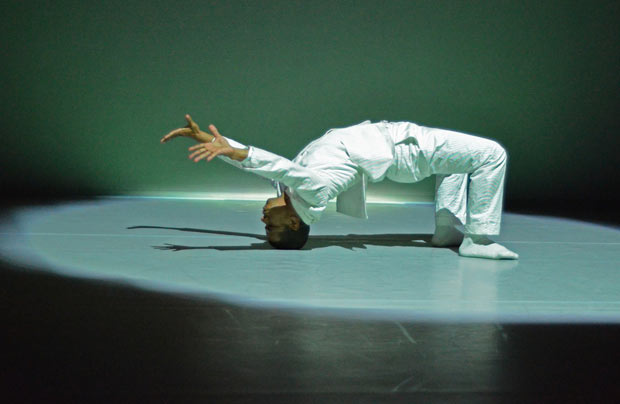
© Dave Morgan. (Click image for larger version)
Jean Abreu Dance
BLOOD
London, Royal Opera House, Linbury Studio Theatre
27 June 2013
Gallery of BLOOD pictures by Dave Morgan
www.jeanabreudance.com
www.roh.org.uk
If you’ve ever had an operation in hospital, you’ll have been amazed by the kind of information required before the surgeons intervene: age, weight, height, race, profession, place of birth, next of kin, religion . . . basic facts about your external identity, since the constituents of your innards are pretty well universal.
Who is the person inside the body? That’s the question that exercises Jean Abreu in BLOOD, inspired by Gilbert & George’s photomontage ‘sculptures’, The Fundamental Pictures (1996). In a series of works, Gilbert and George examined themselves in microscopic detail, juxtaposing their heads and bodies with magnified slides of their own tears, spit, piss, semen, faeces and blood. Exceptionally, they allowed Abreu to incorporate 25 images from three of the series in his new solo. G&G, dressed in dapper grey suits, were present at Thursday’s Linbury performance.
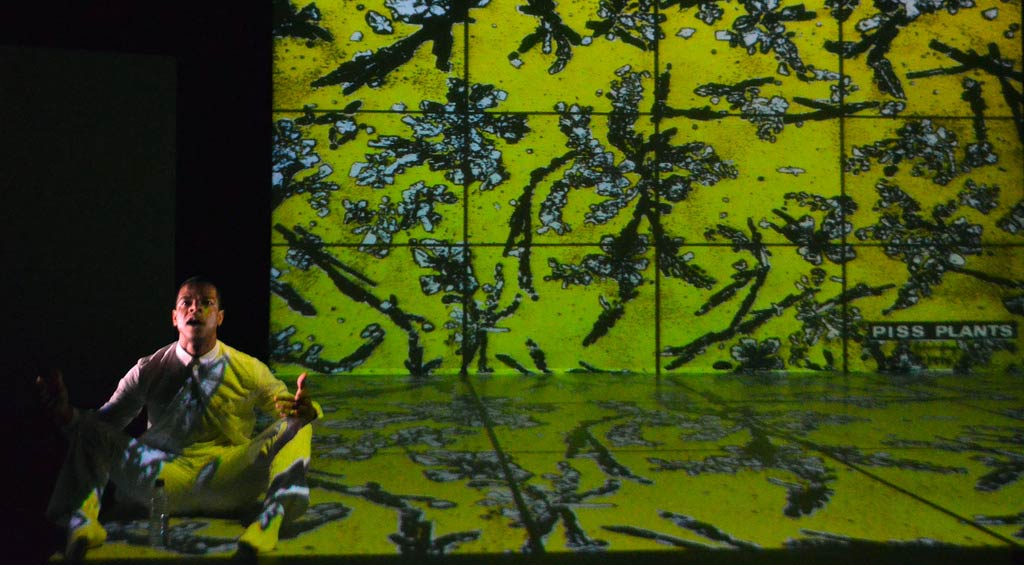
© Dave Morgan. (Click image for larger version)
Abreu wears a white suit (by the fashion designer Richard Nicholl) which serves as a screen for projected images that spill over him, the stage and back wall of the black-box theatre. At first, he seems glued to the floor, writhing, scrabbling and slithering in pools of colour. A headstand is his initial attempt to become vertical. Then, upright, he finds his feet and his voice, speaking in English and Portuguese, his native tongue as a Brazilian.
He’d started medical studies before he became hooked on learning Brazilian dance forms. He moved to London, trained at Laban and began choreographing in 2003. He’s been Artist in Residence all over the place, setting up his own company six years ago. For BLOOD, he collaborated with installation artists Mirko Arcese and Luca Biado, lighting designer Michael Mannion and musician Paul Wolinski. He also enlisted a voice coach and dramaturge to help make his multimedia solo coherent – not entirely successfully.
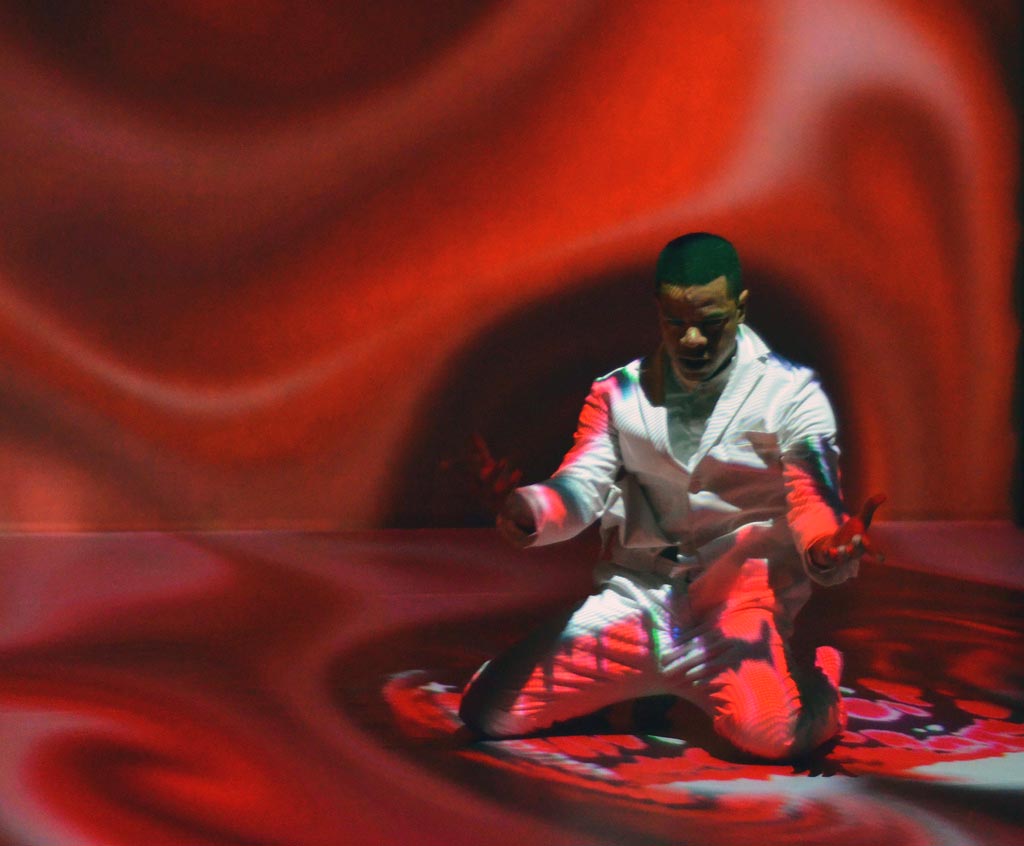
© Dave Morgan. (Click image for larger version)
At intervals during his performance, he imparts the banal information needed for identity papers or medical check-ups; he wonders whether he’s black, brown, mixed, big-bummed, handsome – and decides he’s defintely Latino. He investigates his body language: how his joints articulate, how he likes to appropriate moves from capoeira, salsa, samba and yet more dances and disciplines. He passes his large expressive hands over his head and limbs, takes his pulse, tests the capacity of his lungs.
He retrieves bodily fluids, smearing his face with sweat and saliva, spitting from his water bottle before peeing into it. He fetishes the bottle like the Moor in Petrushka with his coconut. Loose-limbed, he sometimes resembles a puppet flailing against the bloody world. The music that accompanies his investigations ranges from ominous to harmonious, soulful to ponderous. Like his spiralling choreography, it seems cyclical, reiterating Abreu’s quest for his true identity. The hour-plus solo ends with him naked, joining the bare back views of Gilbert and George on the rear wall, his white suit abandoned on the floor.

© Dave Morgan. (Click image for larger version)
The structural logic of the piece is not apparent. Bouts of speech between danced sections don’t contribute much in the way of information. The digitally manipulated visual effects are mesmerising, immersing Abreu in blood red, urine yellow and semen white secretions. His movements are semi-obliterated, unmemorable because unsurprising with repetition. The paradox is that the more revealing he tries to be about his bodily functions, the more impersonal the production appears. That may indeed be Abreu’s aim: to show that however fascinated we may be by ourselves, we are all made up of the same components. We do kind of know this, so we’re unlikely to come away from BLOOD moved or enlightened. But Abreu’s charisma is impressive, as is his command of his muscles and vocal cords. And he is pursuing serious questions about identity and mortality even if he can’t provide the answers – who can?







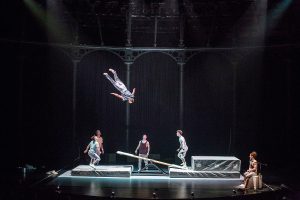
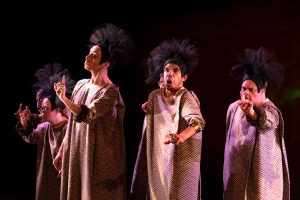
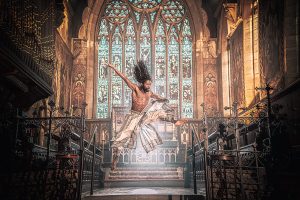

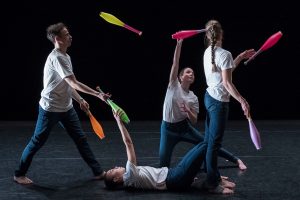





You must be logged in to post a comment.